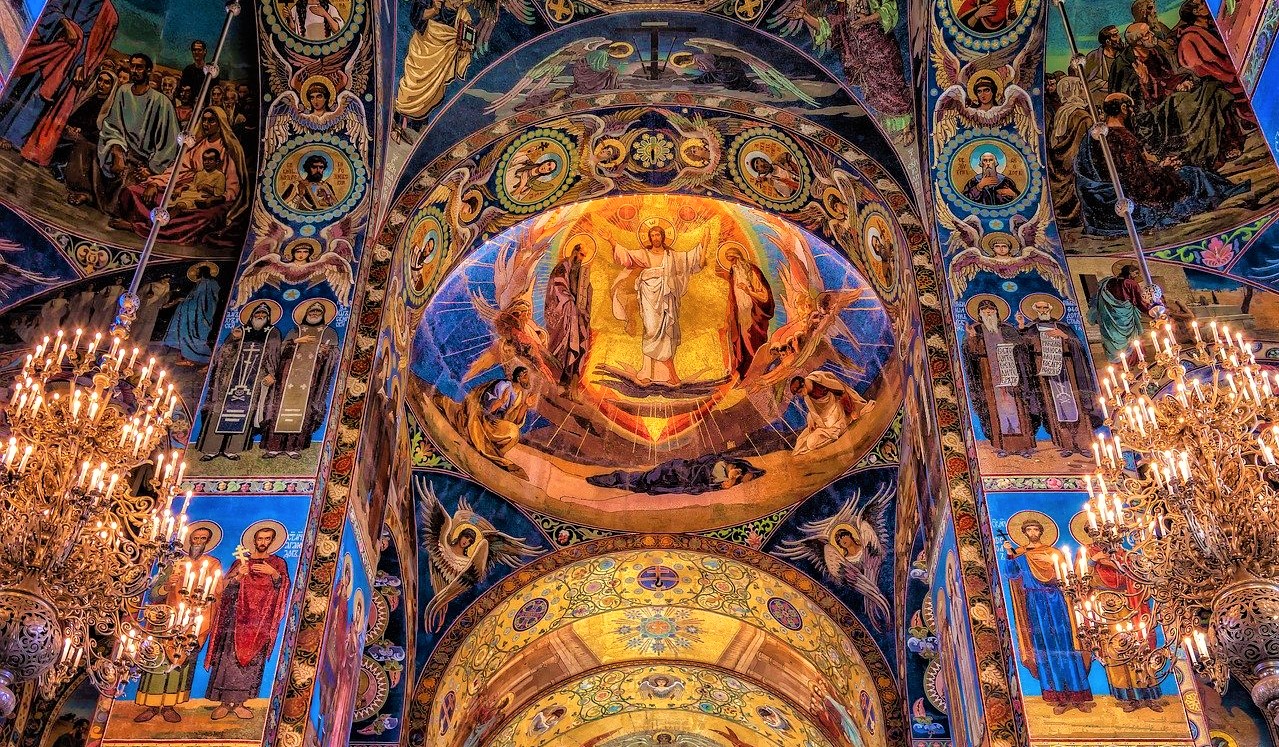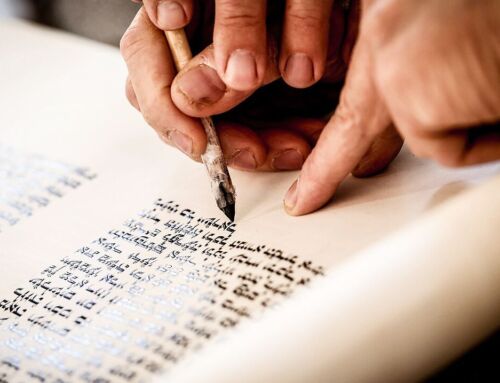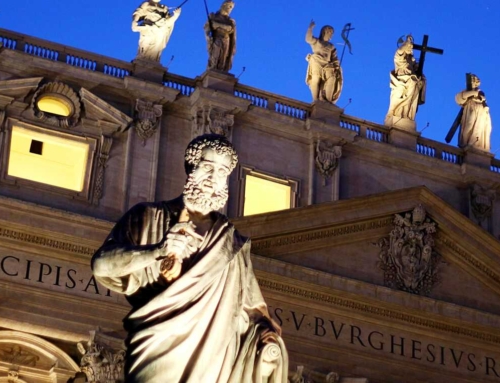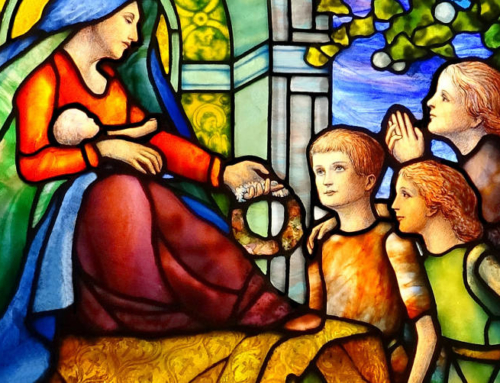Great victories in battle throughout history have always generated great victory songs to celebrate them. The Old Testament features one of those songs from an event that should be familiar to us even if the song isn’t. When God drowned the Egyptians in the Red Sea, Moses stood on the banks looking down on the dead soldiers and sang out,
I will sing to the LORD, for he is gloriously triumphant;
horse and chariot he has cast into the sea.
My strength and my refuge is the LORD,
and he has become my savior.
This is my God, I praise him;
the God of my father, I extol him.
The LORD is a warrior,
LORD is his name! (Exodus 15:1-3)
Moses’ song goes on for twenty-one verses and was a perpetual reminder to the Hebrew nation that God had saved His people from slavery in Egypt.
Exulting in Christ’s victory
Christians have a victory song too because in a very literal sense, Easter is an astonishing triumph. It is the final result of an epic battle between God and Satan, between light and darkness, life and death. It is our perpetual reminder that God has saved us from spiritual slavery in Egypt, namely, sin, by sending His Son to do battle for our souls.
Everything about the Resurrection radiates the glorious victory Christ won on Calvary, and for that reason, Easter has its own song, which is the most beautiful song the Church has to offer!
The ancient hymn of the Church is called the Easter Exsultet, that latter term being the first word of the Latin hymn, “Let [the host of heaven] exult”. It is also called the Easter Proclamation (Latin: Praeconium) emphasizing its character as a public declaration of victory and solemn prayer.
As is the case with so many Catholic prayers, its roots lie in the deep, rich soil of the ancient Tradition. It is believed to have been composed somewhere between the third and fifth centuries, although the form we have today may be an accumulation of prayers and liturgical refinements of many and various religious cultures throughout Christian history. It was known to St. Augustine in the 5th century and found expression in many ancient sacramental texts.
Above all, the Exsultet is a prayer that communicates grace to the faithful soul. Writing at the website, Catholic Culture, Dom Jerome Gassner, O.S.B., expressed this sentiment quite beautifully:
The Exsultet is a most solemn sacramental…. Since the effect of a sacramental is dependent upon the intention of the Church as expressed in the solemnity of the rite and in the terms of the prayers, the Exsultet is without doubt a very great sacramental, productive of an abundance of spiritual and temporal graces. It is a sacramental preparation and a disposing for a happy celebration of Easter, which is to climax in the Easter Eucharist, the resurrection of the souls — with Christ.
The Easter Vigil
The Exsultet is always and only sung at the Easter Vigil (the Mass on the night of Holy Saturday after darkness has fallen). After the Easter fire has been lit to begin the liturgy, the priest lights the large and ornate Paschal Candle, and from there the faithful light their candles and spread the flames one to another throughout the Church as the priest enters the church in solemn procession. This gesture symbolizes the gathering light of Christ entering into and conquering the darkness.
Once the Paschal Candle is in place in the sanctuary, a deacon takes up his position at the podium and sings the Easter Proclamation which lasts about ten minutes (you can watch the English and/or Latin versions in the videos below.)
There is much to be said about the structure and theology behind the Exsultet, but our purpose here is less erudite. We simply want to bask in its immense beauty! (Those who would like to learn more can find an excellent summary in the Wikipedia account.) I will only point out two highlights to help you appreciate the beauty of what you are about to hear.
Light and darkness
The deep mystical grace of this hymn lies in the way it draws a contrast between darkness and light in a poetic fashion. There are numerous occurrences of the word “night” which highlight seven types of night – did you know there were that many types of night?!
The deacon sings of the three nights of the Exodus event (the night of Passover, the night when the Israelites passed through the Red Sea, the dark night of the desert). All were illuminated by the pillar of fire that accompanied the Israelites through the darkness. The biblical pillar of fire is an image of the Paschal Candle in whose presence he sings these praises.
He follows these references by singing of four victories of Christ’s Resurrection over the spiritual darkness of the world. Listen especially for the deacon to sing the formulaic phrase, This is the night… (in Latin: Haec nox est…) to introduce these seven images.
The seven “night” references are balanced with seven “light” references in the song. The focus, of course, is on the concrete symbol of the flame of the Paschal Candle standing tall before the pulpit. There is even a delightful reference to the humble bee who produces the wax for the candle! The deacon celebrates the life-giving powers its light symbolizes.
The most beautiful aspect of the Exsultet, though, is the gorgeous imagery it uses to put man’s redemption by Christ into stark perspective. The images are riveting. Here are just two of them, and if you have a chance to listen to the full chant, you will hear many more.
(at 4:45)
“O charity beyond all telling, to ransom a slave you gave away your Son….. O truly necessary sin of Adam destroyed completely by the Death of Christ….”
(at 5:15)
“O happy fault that earned so great, so glorious a Redeemer…. O truly blessed night, worthy alone to know the time and hour when Christ rose from the underworld!”
The full English text and musical score of the Exsultet are featured in the first video below. The Latin video doesn’t show the text but is situated in the magnificent St. Peter’s Basilica with Pope Benedict in attendance (from 2011). You can access the Latin text in Wikipedia article if you so wish.
Blessed Easter to all! Enjoy the immense beauty of history’s greatest victory chant!
The performance(s) (duration: English, 9:52; Latin, 10:17)

Soul Work
The darkness of sin enters every human life. Sometimes even the darkness of other people’s sinful lifestyles or acts enters our lives unwanted. Sin is the enemy of the human race and the tool of the evil one.
At Easter we bask in the Light of Christ that has permanently conquered the power of the devil over the world. This victory of Christ, however, must be applied to the darkness of our world by those who believe in its power.
During the Easter season, make sure you vanquish the darkness of your own soul by taking the opportunity to go to Confession, which sacramental power was conferred on the Apostles on the very night of the Resurrection (John 20:22-23).
If you truly wish spiritual growth, you may wish to offer a courageous prayer that Christ would shed His light on your darkness. This is not an easy prayer to make, but it comes out of the conviction that the darkness of sin blinds us and makes us unaware of the depth of our own sinfulness.
But do so with the firm conviction that wherever the light of Christ shines, darkness must flee.
———-
Source: Excerpts from the English translation of the Roman Missal© 2010, International Commission on English in the Liturgy Corporation. All rights reserved




Leave A Comment